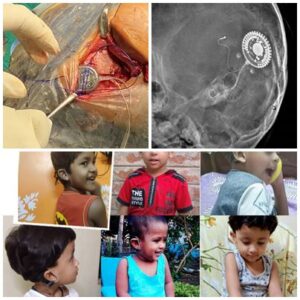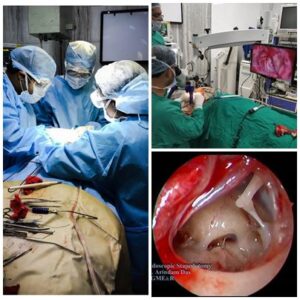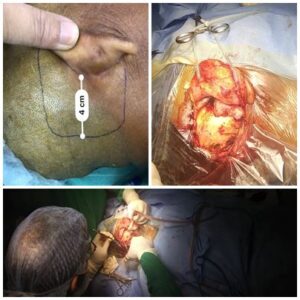
Operative Procedures Done
Cochlear Implants (CI)
- Cochlear Implant is probably one of the best inventions in the recent history of medical science for bilateral severe to profound hearing loss.
- A cochlear implant is an electronic device that stimulates residual nerve fibers in the inner ear. These electrical pulses are sent to the brain and interpreted as sound.
- While hearing aids and other assistive listening devices simply amplify sounds, a cochlear implant transforms speech and other sounds into electrical energy that is used to stimulate surviving auditory nerve fibers in the inner ear.
- According to WHO Hearing Impairment (HI) in India is around 6.3%.
- 4 in every 1000 children suffer from severe to profound hearing loss.
- Bringing sound into the lives of deaf & mute children is one of the greatest joys for any otologist.
- Our expert team of Implant otologist have been involved in doing Cochlear Implantation since 2015 under various sponsored schemes like ADIP, State govt. funds.
- Bilateral Cochlear Implantation have been performed successfully.
- Early detection of hearing impairment and timely intervention has been our moto.
Ear (Otology)
- Otology & Neurotology is a super speciality division of Otorhinolaryngology (ENT), that specifically treat various types of ear and neural disorders. Starting from simple ear infections to complicated tumours of skull base.
- We have a state of the art modular Operation Theatre with latest microscope, camera , drill system to provide best result for our patient.
Basic Otology Procedures
- Long standing ear infection is one of the commonest ear disease that leads to perforation of ear drum and hearing loss. Treatment may involve eardrops, antibiotics or surgery(Tympanoplasty, Mastoidectomy).
- Myringotomy + Gromet insertion
- Tympanoplasty
- Mastoidectomy
- Ossiculoplasty (OCR)
- Stapedotomy/ Stapedectomy
- Otosclerosis is a condition where the third bone of hearing does not move as well as it should. This causes conductive hearing loss. When hearing loss becomes more advanced, hearing aids or surgery may be effective treatment options.
- We offer a surgical treatment called “Stapedotomy” to replace the smallest bone of the human body with micro prosthesis for this conditions. A successful surgery enables you to hear again.
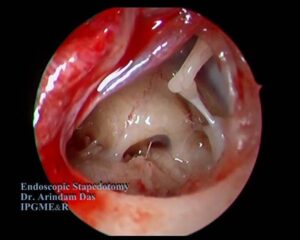
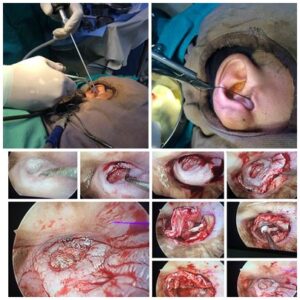
Endoscopic Ear Surgery
- Minimally invasive scar less surgical techniques have already gained huge popularity in the field of otology & neurotology.
- Today it possible to treat ear diseases with the help of endoscope as day care basis.
- In expert hands this surgeries are painless, devoid of any major complications and reduce hospital stay for the patient.
- Dr. Arindam Das is pioneering minimally invasive endoscopic ear surgery to fix various middle ear problems, such as ear drum perforations, Otosclerosis, hearing loss and cholesteatoma. He has published a book on this minimally invasive endoscopic ear surgical techniques.
- Ossiculoplasty: Reconstruction of the ossicles by either reshaping the patient’s existing bones or implanting a titanium prosthesis, to help restore hearing.
- Stapedectomy: Removal and replacement of the stapes bone to treat hearing loss caused by otosclerosis.
- Tumor Removal: Removal of benign or malignant (cancerous) tumors such as acoustic neuromas or paragangliomas
- Tympanoplasty: Repair of a perforated eardrum.
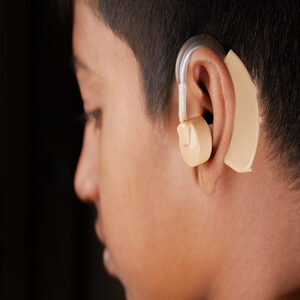 Tonsillectomy
Tonsillectomy
Tonsillectomy is an operation done by Pediatric ENT Doctors in Kolkata where the tonsils are removed. It is usually performed in someone who has recurrent sore throats due to tonsillitis or because they interfere with breathing and swallowing.
Adenoidectomy
The adenoids are similar to the tonsils and are sited at the back of the nose. Adenoidectomy is an operation to remove the adenoids. They are removed because of recurrent colds, because they can interfere with breathing and sleep or because they can be a factor in persistent ear problems.
Myringotomy & Grommets (Ventilation tubes)
A myringotomy is a tiny incision made in the ear drum under a surgical microscope and a tiny tube called ventilation tube / grommet is placed in the hole to keep it open and allow air to reach the middle ear space.
This procedure is recommended by Pediatric ENT Doctors in Kolkata when a person experiences repeated middle ear infection (acute otitis media) or has a hearing loss caused by the persistent presence of middle ear fluid (otitis media with effusion).
Laryngo- Tracheo - Bronchoscopy
Endoscopic evaluation of the larynx (voice box) , trachea ( main wind pipe) and bronchi ( lower airways). This is often required for the diagnosis and treatment of hoarseness, noisy breathing and breathing difficulty. This enables the Pediatric ENT Doctors in Kolkata to look at the patient's airways for anomalies, foreign bodies, tumors, or inflammation. The development of bronchoscopes extends from inflexible metal tubes with appended lighting gadgets to adaptable optical fiber instruments with real-time video systems.
Septoplasty
A septoplasty is an operation designed to straighten a bend/deviation in the septum of the nose and thus improve nasal airflow. Dr. Arindam Das Sinus Doctor in Kolkata does that on a regular basis.
Turbinate reduction
Your Sinus Surgery In Kolkata might be performed in conjunction with a surgical septoplasty under general anesthesia. A specialist will utilize an endoscope, a thin tube with a light toward the end, to enhance perception and give an amplified view while operating.
Nasal Polypectomy
Nasal polyps are growths in the nose often as result of allergy and infections. Polypectomy is a surgical procedure to remove these nasal polyps and improve breathing. This is often combined with functional endoscopic sinus surgery in Kolkata
Functional Endoscopic Sinus Surgery
Endoscopic sinus surgery is an established modern type of sinus surgery with minimally invasive techniques utilising telescopes and small instruments to operate on sinuses through the nostrils. The aim is to widen the openings of the sinuses to remove sinus disease and also so that mucus does not get trapped.
Balloon Sinuplasty
BSP is a minimally invasive procedure where a flexible balloon is used to open blocked sinuses and facilitate drainage of mucus in patients who suffer from chronic sinusitis. While recuperation time differs with every patient, recuperation is ordinarily quick. In an investigation of in-office balloon dilation, most patients were asked to perform regular work and daily actions after 2 days of operation.
Septorhinoplasty
This is a combination of a septoplasty and a rhinoplasty to improve the nasal airflow as well as improve the appearance of the nose. Your surgery will take around 2 ½ hours and is operated under general anesthesia. A little cut is made inside the nose; the nasal mucosa is lifted up and anything that hinders the air route is evacuated or repositioned. The nose is reshaped remotely through the same or diverse cuts and the incision(s) are sutured. Swelling and wounds are typical and not out of the ordinary, however, reduces day by day in a couple days.
- Acoustic neuromas(vestibular schwannomas) are noncancerous (benign) tumors that grow from the hearing and balance nerve between the ear and the brain.
- The most common symptoms of acoustic neuroma are hearing loss and tinnitus. Other symptoms, which can be mild or severe, may include:
- Dizziness or vertigo (dysequilibrium)
- Facial numbness, tingling, weakness or paralysis
- Clumsiness or unsteadiness
- Changes in taste
- Difficulty swallowing and hoarseness
- Confusion
- Headache and/or ear pain
- Endoscopic Pituitary tumour removal
- This is a minimally invasive surgical procedure carried out through the nose and sinuses using endoscopes, to treat and remove tumours of the pituitary gland of the brain. This is a procedure carried out jointly with the the Neurosurgeon. An insignificantly intrusive method, called endoscopic endonasal surgery, utilizes a little entry point at the back of the nasal cavity and causes little disturbance of the nasal tissues. The ENT specialist in Kolkata works through the nostrils with a minor camera and light called an endoscope. In both systems, openings are made in the sphenoid sinus, and sella to reach the pituitary. Once the pituitary is uncovered, the neurosurgeon expels the tumor.
- Endoscopic CSF leak closure
- If there is a hole in the bone and lining (dura) along the floor of the brain, CSF (cerebrospinal fluid) can leak into the nose. A minimally invasive proceure can be performed through the nose to repair this hole, stop the leak and thus prevent infection. Normally performed under general anesthesia, a specialist will work endoscopically through the nose to recognize the break and repair it utilizing muscle and other tissue from the body. CSF leak surgery does not include cutting through the skin, as it is performed totally through the nostrils. Most patients should remain in the hospital for one to three days after surgery. A few patients may require a lumbar drain that is removed before going home.
- Endoscopic Orbit and Optic nerve decopression
- An endoscopic procedure carried out through the nose to decompress the eye ball or the optic (eye) nerve. This is sometimes required to reduce pressure on the eyeball or optic nerve and help treat certain types of visual loss. The objective of optic nerve decompression is to remove a bit of the hard optic channel, in this way removing pressure on the optic nerve. This method is finished with the utilization of endoscopes (little inflexible telescopes), enabling your specialist to experience the nose and sinuses to work in this sensitive surgery with no cuts to the face.
- Microscopic Facial nerve decompression
- The facial nerve that controls the muscles of the face travels through the ear bone. In certain types of facial paralysis, microscopic decompression of the facial nerve is performed to remove pressure on the nerve and allow recovery. By and large, facial nerve decompression is performed through the mastoid bone behind the ear. Bits of the bone are evacuated so that the compressed facial nerve can expanded the pressure that might bring about the loss offacial motionis removed. Contingent upon the individual case, the specialist may carry out the procedure through the middle cranial fossa technique or a mastoidectomy, or both.
- Glomus tumour excision
- These are slow growing benign vascular tumours of the ear and skull base. Of the various options available for their treatment, surgical removal may be one such. These operations are often carried out along with a Neurosurgeon. Fruitful removal of the tumor may likewise require delicateisolation of the tumor from the carotid supply route. This bit of the methodology is to a great degree sensitive and requires the nearby collaboration of the head and neck specialist, ear specialist and, now and again, vascular and neurosurgeons.
- Acoustic Neuroma removal

